
These are tables of congressional delegations from West Virginia to the United States House of Representatives and the United States Senate.

Arlington House is the historic Custis family mansion built by George Washington Parke Custis from 1803–1818 as a memorial to George Washington. Currently maintained by the National Park Service, it is located in the U.S. Army's Arlington National Cemetery in Arlington County, Virginia. Arlington House is a Greek Revival style mansion designed by the English architect George Hadfield. The Custis grave sites, garden and slave quarters are also preserved on the former Arlington Estate.
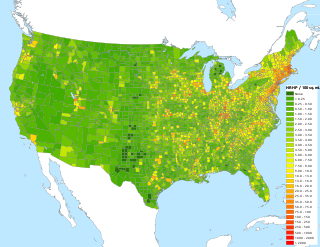
The National Register of Historic Places in the United States is a register including buildings, sites, structures, districts, and objects. The Register automatically includes all National Historic Landmarks as well as all historic areas administered by the U.S. National Park Service. Since its introduction in 1966, more than 97,000 separate listings have been added to the register.

Waitman Thomas Willey was an American lawyer and politician from Morgantown, West Virginia. One of the founders of the state of West Virginia during the American Civil War, he served in the United States Senate representing first the Restored Government of Virginia and became one of the new state of West Virginia's first two senators. He is one of only two people in U.S. History to represent more than one state in the U.S. Senate, the other being James Shields.

Buildings, sites, districts, and objects in Virginia listed on the National Register of Historic Places:

Peter Godwin Van Winkle was an American lawyer, businessman and politician. For many years a leading officer of the Northwestern Virginia Railroad, he became one of the founders of West Virginia and a United States senator.
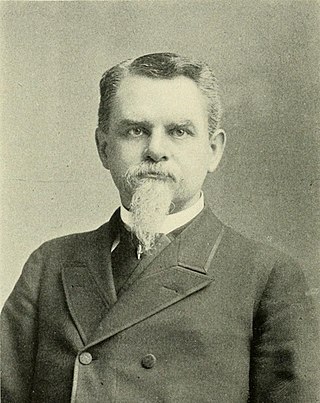
Charles James Faulkner was a United States senator from West Virginia.

James Breckinridge was a Virginia lawyer and politician and a member of the Breckinridge family. He served in the Virginia House of Delegates, as well as the U.S. House of Representatives. He also fought in the American Revolutionary War and served as a brigadier-general during the War of 1812.

Fisher Park is a neighborhood in the north central section of the United States city of Greensboro, North Carolina. Captain Basil J. Fisher turned a swamp into Greensboro's most fashionable Gilded Era address in 1901 when he donated the lowlands for a city park that bears his name. Residents took full advantage of ample lots overlooking the park by commissioning the city's best architects to design sometimes palatial homes. The neighborhood is recognized as Greensboro's first suburb, and is the city's most popular historic district.
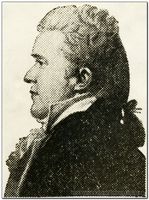
Philip Doddridge was a Virginia lawyer and sectional leader of western Virginia. He served in the United States House of Representatives representing the Wheeling District in the Upper Ohio River Valley, as well as in both houses of the Virginia General Assembly.

Alexander L. Wade was an American educator. Alexander Luark Wade was born in Rushville, Indiana, to George Wade III and Ann Luark Wade on February 1, 1832. He moved to Monongalia County when he was a small child. He married Esther "Hettie" Sanders in 1854. Alexander and Hettie had six children, all of whom lived to adulthood.

Spring Hill Cemetery Historic District is a national historic district located at Charleston, West Virginia, United States. The district is a 172-acre (70 ha) site located on a series of tree shaded and landscaped hills overlooking central Charleston and includes the following cemeteries: Spring Hill Cemetery, Mountain View Cemetery, B'nai Israel Cemetery, Lowenstein Cemetery, and Mount Olivet Cemetery. It is West Virginia's largest cemetery complex. The district features Spring Hill Mausoleum, a stone faced reinforced concrete structure constructed in 1910. Notable graves throughout the cemetery include the following:
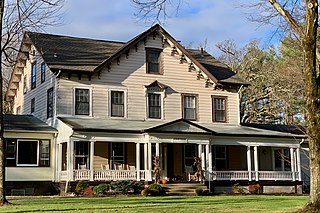
Schooley's Mountain Historic District is a historic district along Schooley's Mountain, Pleasant Grove, and Flocktown Roads, and Heath Lane in the Schooley's Mountain section of Washington Township, Morris County, New Jersey. It was added to the National Register of Historic Places on June 14, 1991 for its significance in architecture, entertainment/recreation, and health/medicine. The district includes 71 contributing buildings, such as the Oak Cottage, site of schoolhouse No. 5, Schooley's Mountain Store, the William W. Marsh House, Christadelphian Bible Camp, the former Heath House Hotel, former Forest Grove Hydropathic Institute, Mine Hill Farm, the Marsh Mine and several private residences and commercial buildings.

Downtown Huntington Historic District is a national historic district located at Huntington, Cabell County, West Virginia. The original district encompassed 59 contributing buildings; the boundary increase added 53 more contributing buildings. It includes the central business district of Huntington and includes several of its municipal and governmental buildings. It contains the majority of the historic concentration of downtown commercial buildings. Located in the district are the separately listed Carnegie Public Library, Cabell County Courthouse, U.S. Post Office and Court House, and Campbell-Hicks House.

Waitman T. Willey House is a historic home located at Morgantown, Monongalia County, West Virginia. It was built in 1839–1840, and is a 1+1⁄2-story, L-shaped brick residence in the Classical Revival style. The front facade features a one-story pentastyle portico with five fluted wood Doric order columns and a high pitched triangular pediment. It was built for Waitman T. Willey (1811-1900), noted lawyer, orator, and statesman.

Mason and Dixon Survey Terminal Point is a historic marker located near Pentress, West Virginia, United States. Located on the boundary between Monongalia County, West Virginia and Greene County, Pennsylvania, it identifies the terminal station established by Charles Mason and Jeremiah Dixon on Brown's Hill on October 19, 1767. The stone placed on Brown's Hill in 1883 in the mound of 1767, marks the westernmost point reached by Mason and Dixon in delineating the common boundaries of Pennsylvania, Maryland, Delaware, and Virginia, and known as the Mason–Dixon line.

The Downtown Morgantown Historic District is a federally designated historic district in Morgantown, Monongalia County, West Virginia. The district, encompassing approximately 75 acres, has 122 contributing buildings and 2 contributing sites including commercial and public buildings, residences, and churches. The district has been listed on the National Register of Historic Places since May 2, 1996. Ten of the contributing buildings are listed separately on the National Register of Historic Places. Significant structures located within the historic district are the Monongalia County Courthouse, the Metropolitan Theater, and the Old Morgantown Post Office.

Beverly Historic District is a national historic district located at Beverly, Randolph County, West Virginia. It encompasses 51 contributing buildings that reflect the history of Beverly from its founding to the end of the 19th century. Notable buildings include the Randolph County Courthouse, old Randolph County Jail (1813–1841), Randolph County Jail (1841), Beverly Public Square (1787), Beverly Cemetery (1768), Beverly Presbyterian Church (1869), Beverly United Methodist Church (1890), Home of "The Enterprise", and the Peter Buckey House and Hotel (1790–1865). Also located in the district is the separately listed Blackman-Bosworth Store.
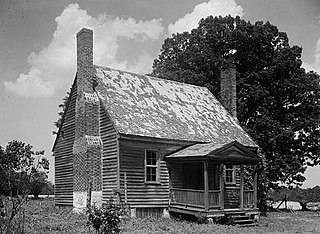
Cascine is a historic plantation complex and national historic district located near Louisburg, Franklin County, North Carolina. The district encompasses 12 contributing buildings, 4 contributing sites, and 3 contributing structures. The main house was built about 1850, and is a large two-story, Greek Revival style frame dwelling, in the manner of Jacob W. Holt, with Gothic Revival style influences. Also on the property is a small, one-story frame dwelling dated to about 1752. It was repaired and refurbished in the mid-20th century. Also on the property are the contributing brick kitchen, frame stable, granary, carriage house, family cemetery, slave cemetery, remains of slave quarters, tenant house, six log and frame tobacco barns, grist mill complex, and archaeological sites.






















